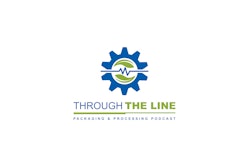A New York federal court's invalidation of some aspects of the U. S. Food and Drug Administration's drug pedigree requirement has not dampened the push being made by many pharmaceutical manufacturers to quickly get a handle on the complexities of item-level RFID tagging.
Both manufacturers and wholesalers are motivated as much by California's January, 2009, ePedigree requirement as the FDA Pedigree dictate, which would have required many smaller wholesalers without formal, manufacturer contracts to get detailed product information from manufacturers and pass it down the supply chain, step-by-step.
Paul Fowler, Axway's vice president of healthcare strategy and a McKesson expatriate, says, "California is pushing very, very hard, and it will be the test case for whether RFID gets launched in the United States." Axway, a leading global provider of business solutions, is a wholly owned subsidiary of Sopra Group.
Paul Chang, RFID/Pharma executive, IBM Software Group, says every drug company that is mid-sized or larger will be working to put RFID tags on at least one stockkeeping unit (SKU) by mid-2008. In addition, a federal court has shot holes in the FDA pedigree requirement by axing some of the package information the FDA said needed to be included. The FDA is considering opening up a new front in its drive to convince drug manufacturers to implement item-level RFID tagging as an anti-counterfeiting measure.
Linear bar codes
The FDA is well aware of the pressure California is putting on drug manufacturers, and it now may be ready to help out by easing its requirements for bar coding of drugs going to hospitals. An upcoming Federal Register notice will ask for the drug industry's thoughts on how the agency might update the technology requirements in the final rule mandating linear bar codes on pharmaceuticals going to hospitals, a rule which went into effect in April 2006.
The rule says that manufacturers must encode the National Drug Code number in a linear bar code on the package. When the agency issued a compliance guide for that rule, it admitted that some companies had asked the agency for permission to use RFID to encode the NDC number on the item package.
The agency said that its thinking at that moment was that companies could put an RFID inlay on the package, but it could only include the lot number and expiration date. The NDC number had to be in a linear bar code. But, significantly, the FDA added, "that we will consider revising the rule to accommodate new technologies and may begin examining other automatic identification technologies by April 2006."
More than a year after that date, and undoubtedly prompted by California's looming ePedigree requirement, the FDA is apparently gearing up to update the hospital drug bar-code rule, according to FDA spokeswoman Crystal Rice. The impetus for this reconsideration is the fact that the earlier compliance guide expires on December 1, 2007, and the FDA has to get the lead out if it intends to have a revised compliance guide in place.
California-'inspired' serials
Barbara Brungess, director, corporate and investor relations at Amerisource Bergen, says that the 96-bit serialization number, which will be required by California in all pedigrees in January, 2009, could theoretically be linked to the NDC number, allowing the FDA to revise its hospital drugs bar-code requirement to allow the NDC to be indirectly "encoded" on an RFID inlay.
In fact, drug manufacturers may be pressuring the agency to do just that, and because of California. The companies may be especially aggressive on that score because the drug wholesalers do not want manufacturers to send product to California with the serialization number in a bar code. That would mean Amerisource Bergen, Cardinal, and others would have to open every carton and read every bar code, a process that would be prohibitively expensive ...Read more
By Stephen Barlas, Contributing Editor
Both manufacturers and wholesalers are motivated as much by California's January, 2009, ePedigree requirement as the FDA Pedigree dictate, which would have required many smaller wholesalers without formal, manufacturer contracts to get detailed product information from manufacturers and pass it down the supply chain, step-by-step.
Paul Fowler, Axway's vice president of healthcare strategy and a McKesson expatriate, says, "California is pushing very, very hard, and it will be the test case for whether RFID gets launched in the United States." Axway, a leading global provider of business solutions, is a wholly owned subsidiary of Sopra Group.
Paul Chang, RFID/Pharma executive, IBM Software Group, says every drug company that is mid-sized or larger will be working to put RFID tags on at least one stockkeeping unit (SKU) by mid-2008. In addition, a federal court has shot holes in the FDA pedigree requirement by axing some of the package information the FDA said needed to be included. The FDA is considering opening up a new front in its drive to convince drug manufacturers to implement item-level RFID tagging as an anti-counterfeiting measure.
Linear bar codes
The FDA is well aware of the pressure California is putting on drug manufacturers, and it now may be ready to help out by easing its requirements for bar coding of drugs going to hospitals. An upcoming Federal Register notice will ask for the drug industry's thoughts on how the agency might update the technology requirements in the final rule mandating linear bar codes on pharmaceuticals going to hospitals, a rule which went into effect in April 2006.
The rule says that manufacturers must encode the National Drug Code number in a linear bar code on the package. When the agency issued a compliance guide for that rule, it admitted that some companies had asked the agency for permission to use RFID to encode the NDC number on the item package.
The agency said that its thinking at that moment was that companies could put an RFID inlay on the package, but it could only include the lot number and expiration date. The NDC number had to be in a linear bar code. But, significantly, the FDA added, "that we will consider revising the rule to accommodate new technologies and may begin examining other automatic identification technologies by April 2006."
More than a year after that date, and undoubtedly prompted by California's looming ePedigree requirement, the FDA is apparently gearing up to update the hospital drug bar-code rule, according to FDA spokeswoman Crystal Rice. The impetus for this reconsideration is the fact that the earlier compliance guide expires on December 1, 2007, and the FDA has to get the lead out if it intends to have a revised compliance guide in place.
California-'inspired' serials
Barbara Brungess, director, corporate and investor relations at Amerisource Bergen, says that the 96-bit serialization number, which will be required by California in all pedigrees in January, 2009, could theoretically be linked to the NDC number, allowing the FDA to revise its hospital drugs bar-code requirement to allow the NDC to be indirectly "encoded" on an RFID inlay.
In fact, drug manufacturers may be pressuring the agency to do just that, and because of California. The companies may be especially aggressive on that score because the drug wholesalers do not want manufacturers to send product to California with the serialization number in a bar code. That would mean Amerisource Bergen, Cardinal, and others would have to open every carton and read every bar code, a process that would be prohibitively expensive ...Read more
By Stephen Barlas, Contributing Editor


















